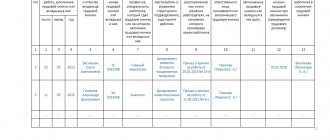What can you do if a writ of execution has been sent to work?
Opposition to the implementation of the executive document is illegal and entails the imposition of an administrative or property penalty. Hiding obligations to pay alimony or other debts from the administration will not lead to anything good. Over the entire period, debt will accumulate, which will have to be repaid, and on the most unfavorable terms, with payment of up to 70% of the money earned. The employee has the right to demand from the accounting department deductions in the amount determined by the court, without allowing deductions established by law. It does not have any other ways to influence retention or change the size. Only the court can reduce the amount of payments, under certain circumstances:
- the birth of a child in the payer’s new family;
- serious illness or disability due to injury;
- job loss;
- excess of total debt obligations 70% of income. In this case, payments are reduced proportionally.
Procedure for withholding funds
As already mentioned, the main function of the writ of execution is to remind the defendant of his existing financial debt. Of course, finances are not the only subject of dispute between the plaintiff and the defendant, but they clearly occupy one of the first places.
Withholding of funds can occur for a variety of reasons. Among the most common options are the following:
- payment of alimony;
- monetary compensation related to the deterioration of the plaintiff’s health;
- loss of a breadwinner;
- compensation for damage caused to the plaintiff as a result of acts of a criminal nature;
- compensation for moral damage;
- compensation for shortages of material assets to superiors;
- return of funds received in excess, and so on.
The reasons for withholding funds can be either divorce with the collection of alimony, or various compensations
Each of the above cases involves its own payment characteristics and the conditions under which these payments will be made.
Deduction from salary
Let’s take a closer look at one of the most common ways for a defendant to pay a debt – deduction from his salary. First of all, it should be said that the bailiffs do not take away the defendant’s entire salary, or most of it. On the contrary, the accountant determines the amount of cash write-offs that will be made over a certain time until the debt is closed.
Deductions from wages are made by the accountant of the organization in which the defendant works.
The algorithm for deducting the defendant’s wages includes several steps:
- carrying out accruals for all types of earnings, as well as all kinds of additional payments or charges (amounts that are not subject to deduction under IL are excluded from this list);
- withholding personal income tax;
- calculation of the amount of money to be redirected to the bailiffs or the defendant. These funds must be delivered to the recipient within three days from the date of payment of the defendant’s salary.
No additional documents, in addition to the IL containing the court decision, will be required from the plaintiff.
To implement the deduction, the defendant will only need a writ of execution
Retention options
The deductions themselves can take different forms:
- mandatory retention. The unconditional nature of this retention format does not imply consent on the part of the employee. Deductions are made compulsorily and are the responsibility of management;
- management-initiated retention. This type of deduction applies to those cases in which the employee’s actions lead to losses for the organization in which he works. As in the first case, nothing depends on the employee’s consent or disagreement. However, the difference is that management has the right to refuse this “educational” measure at their own request;
- retention at the initiative of the employee. This type of retention requires mutual agreement between the employee and management. The defendant can turn to him if he is unable to pay off the entire debt at once. This option in this case will act as a kind of analogue of installment plans in the field of legal debts.
Retention can be carried out both compulsorily and voluntarily
What amount are they entitled to withhold?
The amount of deductions varies according to different documents.
For alimony workers, it depends on the number of children (parents) for whom maintenance is paid: 1–25%, 2–33%, 3 or more – 50%. The exception is the formation of debt for the maintenance of minors. For the period until the resulting debt is repaid, it is allowed to withhold no more than 70% of income.
Also, up to 70% can be recovered as compensation for harm to life or health or damage caused by a crime.
Hotline for citizen consultations: 8-800-350-57-94
Types of executive documents
In conclusion, let’s talk about what types of executive documents are currently actively used in judicial practice.
Table 1. Types of executive documents
| Document type | Description |
| Performance list | Includes an order that the defendant must comply with as soon as possible. Issued by a court of general jurisdiction or an arbitration court. Depending on the defendant’s reaction, the IL may remain with the plaintiff, or be transferred to the bailiffs, who will begin to collect the debt (or other orders) forcibly |
| Court order | A decision made by judges alone. It is based on applications for the recovery of funds or is associated with the recovery of movable property from the defendant. A court order can also be equivalent in function to IL |
| Agreement on payment of alimony | It is concluded between the person who undertakes to pay a fixed amount and the recipient of these deductions. This agreement is based on Chapter 16 of the RF IC. The agreement must be notarized and in documented form. In certified form, the agreement is similar to IL |
Difference between alimony and regular debt
Maintenance obligations take priority over household debts arising as a result of non-payment of a loan or loan, debt or failure to fulfill contractual obligations. In the first case, they are regular. They are not reduced without a court decision, or the will of the claimant, who completely refuses to pay. Regulated by the Family Code of the Russian Federation. Other payments, for example, a writ of execution on a loan, are regulated by the Civil Code of the Russian Federation. They relate to the sphere of civil law relations and are not unconditional, with the exception of payments for damage to life and health. Compensation for harm caused by a crime is also regulated by the Civil Code of the Russian Federation, and not by the Criminal Code.
FAQ
I received a letter from the bailiffs that the court foreclosure on the loan was cancelled, can the bailiff subsequently resume proceedings again?
Check on the FSSP website for what reason the enforcement proceedings were completed or terminated. If you have not repaid this debt, then most likely it will be under Art. 46 part 1 clause 3. - return of the writ of execution to the claimant. If the claimant returns the sheet back to the bailiff, the proceedings will be restored.
Can the bank itself present a writ of execution to the accounting department of the organization where I work?
The claimant has the right to present a writ of execution to the bailiff, to the bank where the debtor's accounts are opened, or to the employer's accounting department if the debtor is an individual.
According to the writ of execution, 50% of the salary was withheld, but I did not know that the bank had filed a lawsuit. What can be done in such a situation?
If the amount of debt does not exceed 500 thousand rubles, then most likely the court issued a court order. It is necessary to go to court to cancel the court order and obtain an appropriate determination, which will be the basis for terminating the individual entrepreneur. But after the court order is canceled, the bank has the right to go to court to collect the debt. Your right to be present at this process and request a reduction in the penalty.
Priority actions
A few years earlier, judicial officers sent enforcement documentation to bailiffs in their own hands. At the moment, this practice has stopped - the exception is cases when the claimant himself asks for it. Moreover, the plaintiff who wins the trial, according to the rules, receives the IL in his hands.
If desired, the plaintiff can keep the writ of execution with him
The further use of the IL depends solely on the plaintiff’s intentions – no one limits him in this matter. If desired, he can keep this document for himself. This is what usually happens when the defendant does not protest and voluntarily pays the amount of money that was designated at the trial.
Employer Responsibilities
The employer must execute the document presented and register it. If the sheet was sent by a bailiff, notify of receipt. The accountant must make deductions and transfer them to the account specified by the collector without delay. The company's problems with a lack of funds are not grounds for delaying the payment of alimony. Otherwise, the company is fined a large amount.
This you need to know: Application to the court for installment payment under a writ of execution
Sheet validity period
In total, the IL remains in force for three years. These are the standard rules, but they have their exceptions:
- if the court restores the deadline for presentation, the validity period is three months from the date of adoption of the relevant decision;
- if the IL applies to the return of a child who was taken outside the country without legal grounds, then it is valid for one year;
- The IL, covering issues of an administrative nature, is presented over the next two years;
- if the IL was sent to the bank and subsequently returned to the sender due to the lack of financial resources in the defendant’s account, the plaintiff has six months left to contact the bailiffs.
In most cases, the writ of execution is valid for three years from the date of its receipt by the plaintiff
Reference. Please note that these periods do not include the time periods during which the judicial proceedings were stopped.
If the sheet is lost
Sometimes plaintiffs lose enforcement documents, which calls into question the very procedure for implementing a court decision. However, this situation is by no means hopeless. All that is required of the plaintiff is to come to court and ask for a duplicate of this sheet. In order for the request to be considered, the citizen will need to write the appropriate application. In this case, the application will need to indicate the reasons as a result of which the IL was lost.
Application for issuance of a duplicate writ of execution
Things will be much worse if the IL disappears from the accountant of the organization in which the defendant works, from whose salary it is planned to deduct. In such a situation, the accountant may face criminal liability, since he will be charged with evading the execution of a court decision.
Procedure after receiving the document
So, at the cost of some effort, the court case was won, a writ of execution was received . The natural question is: what to do next? Where to go? Where should I take the document?
The algorithm of actions is clearly defined by the legislator. It is necessary to clarify that much depends on the subject composition of the legal relationship:
- in the case where the debtor is an individual , the claimant is obliged to contact the bailiff service (Bailiff Service), and more specifically, the department of the said service, geographically located at the location of the debtor (property);
- in the event of material claims being made against an organization, a similar action is taken at the place coinciding with its legal address (branch address, location of property);
- if the execution of a court decision requires the debtor to perform certain actions, then the document is presented to the SSP department, which has jurisdiction over the territory in which the specified actions are supposed to be performed (Article 33 of the Law).
A statement in the prescribed form must be attached to the original writ of execution . In each department of the BSC there are accessible samples, correlating with which your own text does not present any difficulties.
The application form to the bailiff service to initiate enforcement proceedings can be downloaded here.
The only point that requires clarification is additional requirements: the claimant has the right to file a petition to impose additional requirements on the debtor , to ask the SSP to seize property.
This right is given to the applicant by Article 33 of the Law (by the way, this provision also contains other provisions that are important from the point of view of interested parties, so it is advisable to study it in as much detail as possible).
The rules of current office work require drawing up an application in two copies - on the second copy (which remains in the applicant’s hands), the body that accepted the document is obliged to make a note that the application has been accepted.
The “mark” contains the date, the name of the responsible official (secretary), and his signature. This seemingly insignificant action is necessary: in case of controversial situations, the claimant will be able to prove that he has taken the measures provided for by the legislator to initiate enforcement proceedings without violating the deadlines.










